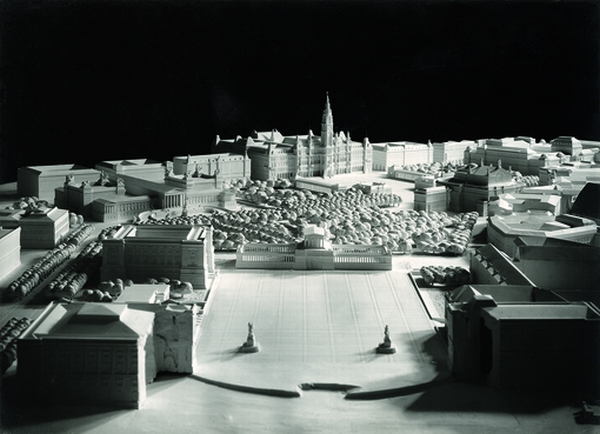Vienna. The Pearl of the Reich
Planning for Hitler
Architekturzentrum Wien, 18 March – 17 August 2015

Hanns Dustmann: Heldenplatz, 1942 © Architekturzentrum Wien
The 2015 spring and summer exhibition in the Architekturzentrum Wien is devoted to the presentation of building in Vienna under National Socialism. Using Vienna as an example, the construction and planning activity of the Third Reich is presented for the first time in this form, which allows the buildings to be analysed and explained within the context of Nazi goals. The myth, which has circulated for decades, that Vienna played no role or at most a very insignificant one in the planning activity of the Third Reich is examined in the exhibition.
With the creation of Groß-Wien (Greater Vienna) the city on the Danube became the second-largest in the Reich after Berlin. Spatial guidelines were formulated and Vienna’s geopolitical role in the Third Reich was defined. This was followed by a wide variety of plans, ranging from projects for monumental urban districts to individual buildings. Concepts for infrastructure, industry and development indicate Vienna’s function as a hub and transit space from and to Southeast Europe. Architecture was instrumentalised for the Nazi regime’s aggressive expansion policy, urban and land use planning became powerful tools for implementing national socialist population policy. Decentralisation that aimed at a move towards a city landscape anticipated the more loosely developed, car-friendly city after 1945 and also indicates continuities in the planning work carried out after the end of the war.




